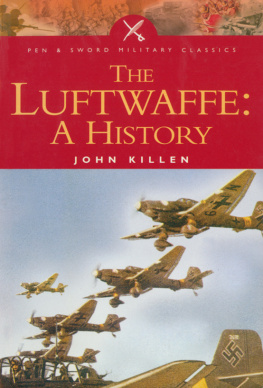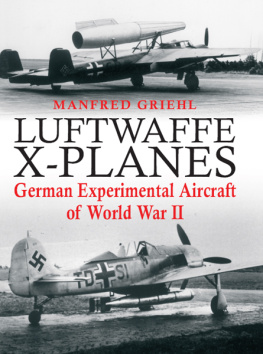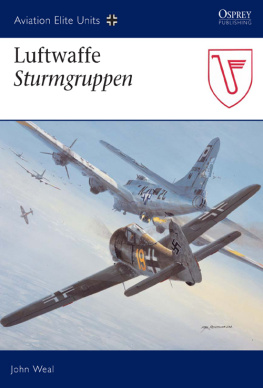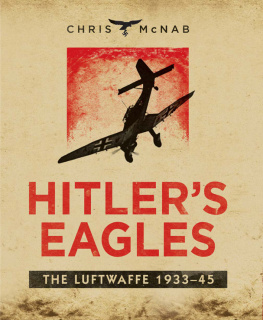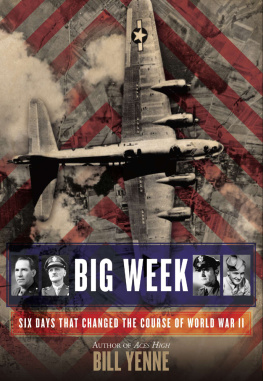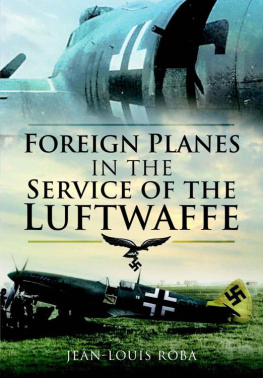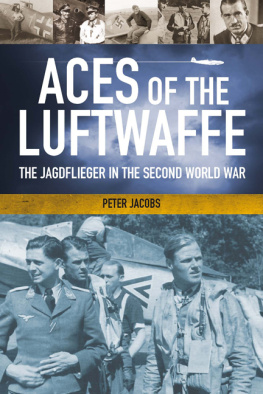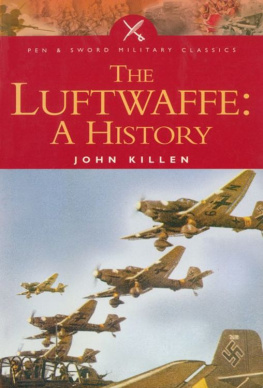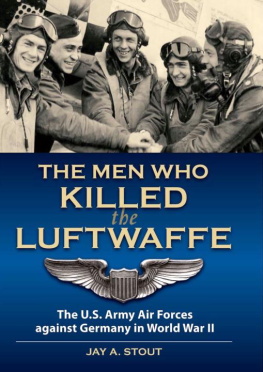The Rise of the Luftwaffe
1918-1940
Herbert Molloy Mason
Herbert Molloy Mason. Jr 1975
Herbert Molloy Mason has asserted his rights under the Copyright, Design and Patents Act, 1988, to be identified as the author of this work.
First published in Great Britain in 1975 by Dial Press.
This edition published in 2018 by Lume Books.
To
Martin Caidin
Table of Contents
I HERITAGE
We officers did our duty for four long years. We risked our bodies for the Fatherland. Now we come home and how do they treat us? They spit on us and deprive us of what we gloried in wearing. I therefore implore you to cherish hatred, a profound, abiding hatred of those animals who have outraged the German people. But the day will come when we drive them out of Germany. Prepare for that day. Arm yourselves for that day. Work for that day.
Hermann Goering
December 1918
DARK NOVEMBER
I knew that all was lost. Only fools, liars and criminals could hope for mercy from the enemy.
Lance Corporal Adolf Hitler,
16th Bavarian Reserve Infantry Regiment,
November 10, 1918
They fought well. Let them keep their weapons.
Marshal Ferdinand Foch,
November 11, 1918
Late in the morning of April 21, 1918, with the early mists burned from the valley of the Somme, combat aviations most glittering star and the great German national hero, Rittmeister Manfred von Richthofen, prepared to lead a handful of pilots on patrol. Richthofen, noted for his Prussian bearing and grudging humor, was in unusually high spirits. He roughhoused with his brindle great dane, Moritz; he playfully upset a cot, spilling Lieutenant Wenzl onto the wet grass; he enthused over an upcoming woodcock shoot in the Black Forest, and he again cautioned his younger cousin, Wolfram, against taking undue chances on this, his first offensive outing. Only the day before, Manfred had shot down his seventy-ninth and eightieth victims, a pair of British fighters. Nevertheless he constantly preached respect for the enemy and the mortality rate among German pilots lent authority to his admonitions.
Shortly before 10 A.M. Richthofen pulled on knee-length fur flying boots, buckled a worn black leather helmet to his head, gave Moritz a whack and climbed into the cockpit of his pure red Fokker triplane. An hour later he lay dead beside a dirt road inside British lines, machine-gunned through the chest, while Australian soldiers swarmed over the crashed airplane like hyenas tearing at a zebra carcass, stripping the wreckage of everything that could be cut, torn or pried loose. An outraged chaplain of the Eighth Field Artillery Brigade steamed into the middle of the pushing, shoving soldiery and shamed the men into returning Richthofens personal belongings, looted from the still-warm body.
Richthofen was buried the next afternoon in the verdant cemetery at Bertangles, his coffin borne by six British and Commonwealth officers, and the service read from the Church of England manual; the firing party was composed of men from the Australian Flying Corps, and large floral wreaths decorated the grave. Richthofen was claimed both by Canadian-born Captain Arthur Royal Brown of the 208th Squadron, who had shot down eleven other German planes during the war, and by machine-gunners of the artillery brigade deployed in the area. Brown didnt really care who got the credit for bringing down the Red Baron; in almost constant pain from stomach ulcers, he was invalided home after flying only one other patrol.
*
Richthofens own choice as successor to command was a pilot of long seniority, but with only one kill to his credit, Captain Wilhelm Reinhard, a steady, low-key personality who had survived ground warfare in Belgium, bombing missions over Verdun, typhus in the Balkans, and the fighter school at Warsaw. When Reinhard was killed in a flying accident less than sixty days later, he was replaced by a new commander from outside the group, who would continue to lead the group until the final shot.
He was as lean and as hard as a whip, with a square, strong face, straight black hair, and a long, thin mouth as cruel as a razor. At twenty-five, First Lieutenant Hermann Wilhelm Goering was a seasoned air warrior credited with twenty-one kills, decorated with the Blue Max, holder of the Iron Cross, the Hohenzollern Medal with Swords, the Zaehring Lion with Swords, and a member of the Order of Karl Friedrich. He had been a fighter pilot since 1916, an observer on reconnaissance craft previously, and before that an innovative and fire-eating officer of the Prinz Wilhelm Regiment. There was no question of Goerings personal courage, but he alienated his command at the start by first praising Richthofen as a combat pilot, and then suggesting strongly that his methods of command had been entirely wrong. From now on, Goering said in a strangely insistent tone of voice, Richthofen's laissez-faire attitude toward individual initiative and free chase after enemy aircraft was out. He, Goering, would direct squadron and group attacks how, when, and where he deemed best, and woe to any pilot who disobeyed his commands. Goerings imperial manner did not go down well with the others, some of whom, like the audacious and irreverent Ernst Udet and Manfreds brother Lothar, had far higher scores, all of whom had revered Richthofen, and none of whom liked the idea of cavalry-style regimentation that is inimical to the spirit of the hunter.
Goering quickly proved his mettlesomeness on July 18 by leading the group hurtling down on a formation of French Spads and gunning down his twenty second, and final, victim of the war. On this same day, a noncom pilot named Willi Gabriel flaunted the new commanders instructions by flying off on his own to singlehandedly attack two separate enemy formations, blowing three French fighters and a bomber out of the sky. Goering rewarded Sergeant Gabriel with a blistering public rebuke and transfer to a rear-echelon depot.
Goerings natural irascibility increased as the weeks flew by due to fatiguing pressures exerted on the thinly stretched fighter units all up and down the line. He complained of lack of proper telephone communications between squadrons and groups. He peevishly reported having to fight what he believed to be armored French reconnaissance planes, upon which his machine guns had not the slightest effect, and demanded the employment of additional 77 millimeter flak batteries to help his fighters perform their defensive mission. Goering reported back to the air force commander in chief, General Ernst von Hoeppner, that his pilots were often forced to fly five patrols each day, warning that in the long run neither the men nor the engines can stand up to such strain. But there were never any complaints by either Goering or any other German pilot about the new equipment they were flying, thick-winged Fokker D.VII biplanes with 185 horsepower BMW (Bavarian Motor Works) engines that provided dramatically increased time-to-climb capability and a service ceiling exceeding 20,000 feet. (They climb like elevators, commented American pilot Elliott White Springs, and just hang there on their props, shooting your belly full of holes.) Moreover, the new Fokkers were tough, acrobatic, easy on the controls, and forgave beginners' mistakes, an important consideration as more replacements began to show up with fewer hours in the air. Appreciated even more were the parachutes that became available during the summer of 1918; no longer would German pilots face the prospect of roasting to death when incendiary bullets slammed into the fuel tanks. No Allied pilot had them.
The three fighter groups of the German air force, Jagdgeschwaders 1, 2 and 3, became true aerial circuses, quick-erecting tents, trucks, and all, likely to move on an hours notice, thrown into whichever sector was most threatened by superior Allied numbers. Goerings JG.i was shuttlecocked from Berne to Busigny to Metz and then to Marville, all within six weeks. Goering was like a sheriff with a dwindling number of deputies trying to keep at bay an ever-increasing number of brigands scattered across seemingly endless amounts of territory. On October 10, ten of Goerings Fokkers were jumped by three times that number of French Spads flown by American pilots of the 94th and 147th Pursuit Squadrons. Captain Eddie Rickenbacker shot down one of the German fighters in flames as the two formations split apart in a wild melee. The pilot, Lieutenant Kohlbach, took to the silk and floated to earth under a canopy of dueling planes. The circus was reinforced by a German squadron falling out of the sun, and in the end, five Spads were destroyed, one in a midair collision with one of Goerings men.


